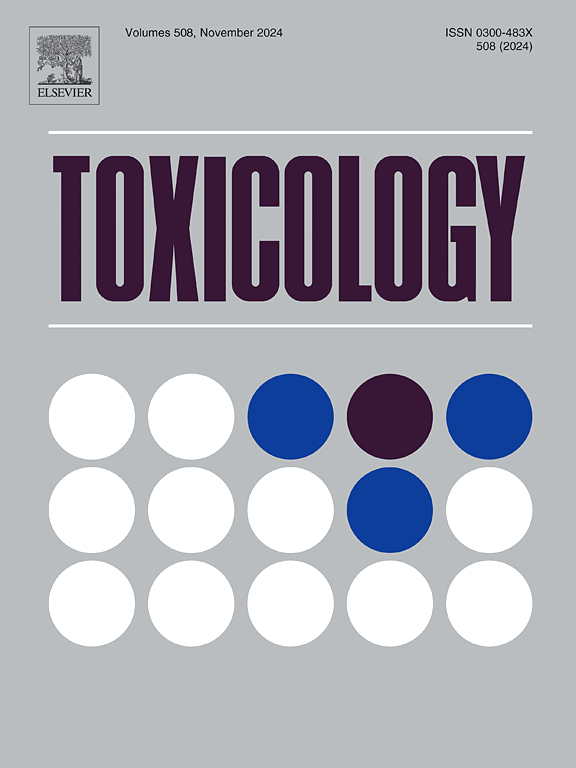Comparative study of CYP450 gene regulation in human pluripotent stem cell-derived liver 2D cell and 3D organoid models
IF 4.6
3区 医学
Q1 PHARMACOLOGY & PHARMACY
引用次数: 0
Abstract
Human pluripotent stem cell (hPSC)-derived hepatic models, including 2D hepatocyte-like cells (2D HLCs) and hepatic organoids (HOs), are valuable in vitro models for evaluating the safety and efficacy of drugs. However, 2D HLCs show limited expression and activity of drug-metabolizing enzymes, particularly cytochrome P450 (CYP450), which are involved in detoxification, a major liver function. HOs have more mature properties than 2D HLCs, particularly enhanced CYP450 gene expression. However, the transcriptional regulatory mechanisms that correlate with CYP450 expression in HOs remain unclear. Epigenetic mechanisms, including DNA methylation and histone modification, are essential for controlling gene expression during stem cell differentiation. Here, we identified epigenetic states around transcriptional regulatory regions and compared them with those in primary human hepatocytes. We found that significantly higher CYP450 gene expression in hPSC-derived HOs than in 2D HLCs was strongly associated with decreased DNA methylation and increased enrichment of histone H3 lysine 27 acetylation in their transcriptional regulatory regions. Furthermore, because of the higher expression of nuclear receptor genes, especially constitutive androstane receptor and pregnane X receptor, HOs showed higher NR-mediated induction of CYP3A4, UGT1A1, and MDR1 than 2D HLCs. Therefore, these results suggest that mature epigenetic regulation may have an impact on drug metabolism and toxicity outcomes in hPSC-derived hepatic models and, hence, be used as an indicator of model maturation.
CYP450基因在人多能干细胞衍生的肝脏2D细胞和3D类器官模型中的调控比较研究
人类多能干细胞(hPSC)衍生的肝脏模型,包括2D肝细胞样细胞(2D hlc)和肝类器官(HOs),是评估药物安全性和有效性的有价值的体外模型。然而,2D hcc的药物代谢酶的表达和活性有限,尤其是细胞色素P450 (CYP450),它参与排毒,一种主要的肝功能。HOs比2D HLCs具有更成熟的特性,特别是CYP450基因表达增强。然而,与HOs中CYP450表达相关的转录调控机制仍不清楚。表观遗传机制,包括DNA甲基化和组蛋白修饰,对控制干细胞分化过程中的基因表达至关重要。在这里,我们确定了转录调控区域周围的表观遗传状态,并将其与原代人肝细胞的表观遗传状态进行了比较。我们发现,在hpsc衍生的HOs中,CYP450基因的表达明显高于2D HLCs,这与它们转录调控区域DNA甲基化的减少和组蛋白H3赖氨酸27乙酰化的增加密切相关。此外,由于核受体基因,特别是组成型雄烷受体和孕烷X受体的表达更高,HOs比2D hcc表现出更高的nr介导的CYP3A4, UGT1A1和MDR1的诱导。因此,这些结果表明,成熟的表观遗传调控可能对hpsc衍生的肝脏模型的药物代谢和毒性结果有影响,因此可以作为模型成熟的指标。
本文章由计算机程序翻译,如有差异,请以英文原文为准。
求助全文
约1分钟内获得全文
求助全文
来源期刊

Toxicology
医学-毒理学
CiteScore
7.80
自引率
4.40%
发文量
222
审稿时长
23 days
期刊介绍:
Toxicology is an international, peer-reviewed journal that publishes only the highest quality original scientific research and critical reviews describing hypothesis-based investigations into mechanisms of toxicity associated with exposures to xenobiotic chemicals, particularly as it relates to human health. In this respect "mechanisms" is defined on both the macro (e.g. physiological, biological, kinetic, species, sex, etc.) and molecular (genomic, transcriptomic, metabolic, etc.) scale. Emphasis is placed on findings that identify novel hazards and that can be extrapolated to exposures and mechanisms that are relevant to estimating human risk. Toxicology also publishes brief communications, personal commentaries and opinion articles, as well as concise expert reviews on contemporary topics. All research and review articles published in Toxicology are subject to rigorous peer review. Authors are asked to contact the Editor-in-Chief prior to submitting review articles or commentaries for consideration for publication in Toxicology.
 求助内容:
求助内容: 应助结果提醒方式:
应助结果提醒方式:


